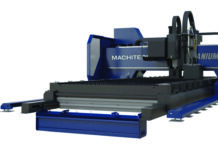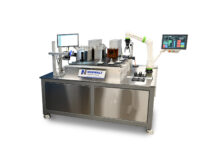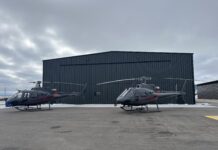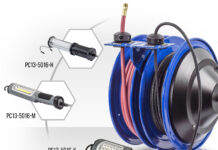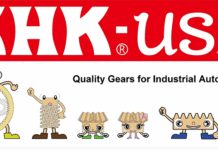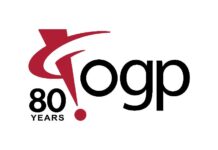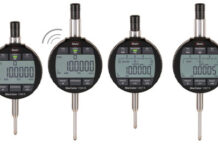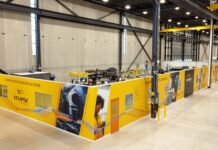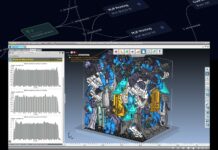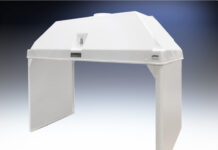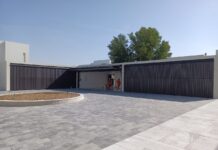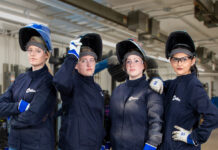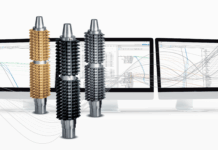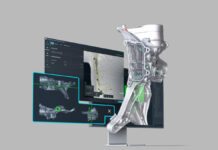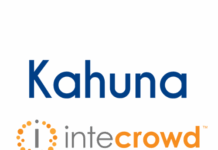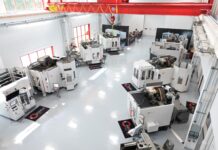It’s been more than half a century since Edwin “Chris” Christensen recognized the need for a safe lifting device for the machining industry and established the company in 1969 which would then come to be known as Sky Hook in Letha, Idaho. Since that time, it has become a recognized world leader with an extensive line of tool post-mount, floor-mount, and mobile lifting equipment used in every conceivable industry and for an ever-growing number of products and applications.
It all began with a single device: the Tool Post Mount Sky Hook. Such was the success of its design that it was the only piece of equipment the company manufactured, and the only model Christensen sold, for some 15 years. In the 1980s, as the second generation of Christensen’s prepared to take the company’s helm, the first new piece of equipment was added to its lineup: the Bench Mount Sky Hook.
 With two additional models soon to be added, these devices became Sky Hook’s first category of lifting devices, referred to as Fixed Mount Lifting Devices. Another category was then created that’s known as Mobile Lifting Devices, offering four different models of its own. All told, these eight models marked the company’s growth into the “CNC machining” era, offering a range of options designed specifically for reaching into enclosure-type machines (please see sidebar for more information on these categories and models).
With two additional models soon to be added, these devices became Sky Hook’s first category of lifting devices, referred to as Fixed Mount Lifting Devices. Another category was then created that’s known as Mobile Lifting Devices, offering four different models of its own. All told, these eight models marked the company’s growth into the “CNC machining” era, offering a range of options designed specifically for reaching into enclosure-type machines (please see sidebar for more information on these categories and models).
This period was overseen by husband and wife Dean and Twilla Christensen, who helped develop the Articulating Arm category. This was a major evolution for Sky Hook, representing a leap from manual to CNC machining lifting devices, and carried the company into an entirely new range of markets, applications, and end-users, including semiconductor and aerospace. It also focused the company’s attention on the design characteristics of its entire product lineup, according to Thomas Christensen, vice president of design.
“Our approach is to manufacture stock lifting devices that our resellers and wholesalers can keep in inventory as well as provide an offering of Sky Hook customization options which can be easily applied according to a customer’s specific needs,” says Christensen, representing the fourth generation of Sky Hook’s family ownership. “We refer to this as ‘standard modification.’ If the customer requires more extensive customization, we’ll move into what we call ‘unique design,’ which might include ergonomic modifications, locking wheels, cabinet drawers, and other things of that nature. We can accomplish these things very quickly because all of our manufacturing occurs in house; everything from bringing in the raw materials to turning, milling, welding, and powder coating, etc. So we’re in control of the entire process.”
 An additional benefit of working closely with customers on device customization is that lessons learned allow the OEM to improve its own equipment designs, allowing market demand to aid in continuous improvement.
An additional benefit of working closely with customers on device customization is that lessons learned allow the OEM to improve its own equipment designs, allowing market demand to aid in continuous improvement.
“I would point to ergonomics as a prime example,” Christensen says. “We took what we were hearing from our customers and seeing for ourselves on the front lines and began to modify our designs in order to increase safety and ease of use. Another reason this is important is that, in the age of the coronavirus, with the elimination of two-man lifting, it’s critical to make sure that a one-man procedure can be accomplished in a safe manner. I’d also like to point out that Sky Hook devices are an ideal means of achieving social distancing on the factory floor.”
Christensen says future projects will focus on standardizing these ergonomic solutions across its entire product line and continuing to harness the power of customization projects in product development. “We want to keep streamlining every aspect of the company,” he says, “from our lifting devices to the way they are produced.”




